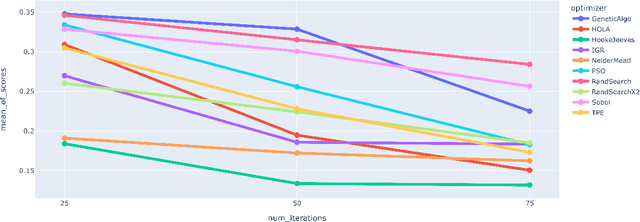Gabriel Maher
WebLists: Extracting Structured Information From Complex Interactive Websites Using Executable LLM Agents
Apr 17, 2025Abstract:Most recent web agent research has focused on navigation and transaction tasks, with little emphasis on extracting structured data at scale. We present WebLists, a benchmark of 200 data-extraction tasks across four common business and enterprise use-cases. Each task requires an agent to navigate to a webpage, configure it appropriately, and extract complete datasets with well-defined schemas. We show that both LLMs with search capabilities and SOTA web agents struggle with these tasks, with a recall of 3% and 31%, respectively, despite higher performance on question-answering tasks. To address this challenge, we propose BardeenAgent, a novel framework that enables web agents to convert their execution into repeatable programs, and replay them at scale across pages with similar structure. BardeenAgent is also the first LLM agent to take advantage of the regular structure of HTML. In particular BardeenAgent constructs a generalizable CSS selector to capture all relevant items on the page, then fits the operations to extract the data. On the WebLists benchmark, BardeenAgent achieves 66% recall overall, more than doubling the performance of SOTA web agents, and reducing cost per output row by 3x.
LLMPC: Large Language Model Predictive Control
Jan 05, 2025

Abstract:Recent advancements in prompting techniques for Large Language Models (LLMs) have improved their reasoning, planning, and action abilities. This paper examines these prompting techniques through the lens of model predictive control (MPC). We show that LLMs act as implicit planning cost function minimizers when planning prompts are used. Under our framework we demonstrate that LLM planning performance can be improved further by incorporating real planning cost functions and evaluators.
A Light-Weight Multi-Objective Asynchronous Hyper-Parameter Optimizer
Feb 15, 2022



Abstract:We describe a light-weight yet performant system for hyper-parameter optimization that approximately minimizes an overall scalar cost function that is obtained by combining multiple performance objectives using a target-priority-limit scalarizer. It also supports a trade-off mode, where the goal is to find an appropriate trade-off among objectives by interacting with the user. We focus on the common scenario where there are on the order of tens of hyper-parameters, each with various attributes such as a range of continuous values, or a finite list of values, and whether it should be treated on a linear or logarithmic scale. The system supports multiple asynchronous simulations and is robust to simulation stragglers and failures.
Geometric Uncertainty in Patient-Specific Cardiovascular Modeling with Convolutional Dropout Networks
Sep 16, 2020



Abstract:We propose a novel approach to generate samples from the conditional distribution of patient-specific cardiovascular models given a clinically aquired image volume. A convolutional neural network architecture with dropout layers is first trained for vessel lumen segmentation using a regression approach, to enable Bayesian estimation of vessel lumen surfaces. This network is then integrated into a path-planning patient-specific modeling pipeline to generate families of cardiovascular models. We demonstrate our approach by quantifying the effect of geometric uncertainty on the hemodynamics for three patient-specific anatomies, an aorto-iliac bifurcation, an abdominal aortic aneurysm and a sub-model of the left coronary arteries. A key innovation introduced in the proposed approach is the ability to learn geometric uncertainty directly from training data. The results show how geometric uncertainty produces coefficients of variation comparable to or larger than other sources of uncertainty for wall shear stress and velocity magnitude, but has limited impact on pressure. Specifically, this is true for anatomies characterized by small vessel sizes, and for local vessel lesions seen infrequently during network training.
 Add to Chrome
Add to Chrome Add to Firefox
Add to Firefox Add to Edge
Add to Edge